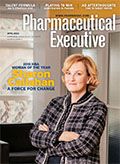Biosimilars Name Game Remains Thorny Issue
Pharmaceutical Executive
Follow-on product naming, messaging challenge FDA, industry.
The pull and tug over biosimilar prescribing and marketing continues to be contentious and raise tricky regulatory issues. Biosimilar makers are concerned about developments they see as undermining public confidence in licensed follow-ons and welcome promised stepped-up scrutiny from FDA. At the same time,
Jill Wechsler

marketers of these competitive therapies are upset over FDA’s recent decision to drop an earlier proposal for adding suffixes retroactively to existing biotech therapies so that they carry the same extra identifiers as biosimilars. The result is that innovator products and biosimilars will have different names, a situation that follow-on marketers fear will discourage prescribing and switching to new, competitive therapies.
This revised “naming convention” for biosimilars and reference products, as announced last month by outgoing commissioner Scott Gottlieb, pulls back from an earlier proposed shift to a new naming system for both biosimilars and their reference products. Now FDA finds that its January 2017 draft guidance would be costly and confusing to implement, while maintaining different identifiers would facilitate accurate post-approval safety monitoring and reporting. Consequently, FDA now proposes that new biosimilars will have names with added suffixes, which will make them different from approved originator products. This situation may lead prescribers and patients to question whether new follow-on products are really the same as innovator therapies.
Going forward, though, FDA will require a distinct suffix for both biosimilars and for new biological products, eventually leading to similar names and suffixes for the two categories. Meanwhile, the current approach, as outlined in updated draft guidance, appears to favor innovators. Competitors maintain that names should be the same to emphasize that innovator and biosimilar products provide the same benefits

and risks, and that patients can be switched from one to the other without harm.
Gottlieb also looked ahead to important regulatory changes in March 2020, when the biosimilar pathway will apply to certain biotech products currently regulated as drugs, such as insulin. That transition will open the door to biosimilar versions of these therapies, an important development in the continuing debate over the affordability of insulin and other long-standing therapies.
In his statement on the revised biologic naming policy, Gottlieb maintained that the new naming convention should not create a barrier to biosimilar use. But neither should the drive for competition, he said, limit FDA’s ability to track adverse events to a specific biological product to better ensure patient safety.
Clarifying communications
At the same time, FDA says it will encourage biosimilar prescribing by challenging false and misleading statements by innovators that imply differences in the safety and efficacy of biosimilars compared to reference products. Last August, Pfizer filed a petition with FDA calling for agency guidance to clarify how certain innovator communications about reference products and biosimilars may be unlawful. FDA seeks to “stop any false or misleading promotion about biosimilars,” said FDA chief of staff Lauren Silvis at the DIA Advertising and Promotion conference in February. Silvis noted that agency leaders have “serious concerns” about statements from brands that compare biological reference products and biosimilars in ways designed to “undermine public confidence” in licensed biosimilars and, therefore, “deter competition.”
The agency will take action, Silvis said, to ensure that healthcare providers and patients receive “useful information” about these products that offer safe, effective, and more affordable treatment options.
Charges about misleading innovator statements also surfaced at recent Congressional hearings on drug pricing and marketing. Legislators generally support biosimilar development and approval as a way to increase competition to reduce treatment costs to patients and share concerns about misleading information and “patent thickets” designed to delay marketing of follow-on products. At a hearing before the Senate Finance Committee in February, Merck & Co. and Pfizer CEOs expressed frustration over difficulties in penetrating the market for inflammatory disease therapy Remicade (infliximab), blaming their limited sales on incentives offered to health plans and pharmacy benefit managers (PBMs) by Remicade maker Johnson & Johnson’s Janssen unit to favor the originator product on formularies and to encourage Medicare Part B reimbursement.
Pfizer’s petition cites brands for suggesting differences between biosimilars and reference products and claiming that even “highly similar” treatments may elicit different reactions in patients. Of particular concern to biosimilar marketers is use of the term “non-medical switching” by innovators to imply that prescribing a biosimilar may not be safe or justified by clinical evidence, even for interchangeables. The Association for Accessible Medicines (AAM) and its Biosimilars Council agree that FDA should clarify that such misleading language is inappropriate, and that patients should not have to “fail first” on a reference product in order to switch to a biosimilar.
A related request is that FDA allow biosimilar marketers to disseminate clinical and other data not included in the approved label, but that is “consistent with” approved labeling, a policy presented in recently finalized FDA guidance. Such an approach fits FDA efforts to be more flexible in how marketers provide information to medical professionals, as seen in recently finalized guidance on manufacturer communication of healthcare economic information to payers and healthcare organizations.
Other recent guidances offer advice on presenting quantitative efficacy and risk information in direct-to-consumer advertising and on labeling new therapies approved under accelerated approval pathways.
Jill Wechsler is Pharmaceutical Executive’s Washington Correspondent. She can be reached at jillwechsler7@gmail.com

Navigating Distrust: Pharma in the Age of Social Media
February 18th 2025Ian Baer, Founder and CEO of Sooth, discusses how the growing distrust in social media will impact industry marketing strategies and the relationships between pharmaceutical companies and the patients they aim to serve. He also explains dark social, how to combat misinformation, closing the trust gap, and more.

















